Satantango, by László Krasznahorkai and translated by George Szirtes
Normally I hate writing reviews weeks after finishing a book. It tends to make the task much harder, as details start to blur and impressions fade. In the case of Satantango those concerns don’t really apply. Firstly, because the impression this book made will take a lot more than a few weeks to fade; and secondly because there was never any way that Satantango was going to be easy to write about however quickly I’d written my review.
Here’s the first sentence of the novel:
One morning near the end of October not long before the first drops of the mercilessly long autumn rains began to fall on the cracked and saline soil on the western side of the estate (later the stinking yellow sea of mud would render footpaths impassable and put the town too beyond reach) Futaki woke to hear bells.
I was going to quote the first paragraph, but the book has no paragraphs, just some 270 or so pages divided into twelve dense chapters. I suspect that makes it sound unapproachable, and I won’t lie, it’s not the most accessible book out there. It’s a book that requires effort on the part of the reader. It’s also though easily one of the best works of fiction I’ve read this year and one that more than repays the reader’s dedication.
The first six chapters describe a small Hungarian village. Once an industrial estate, the factory the village served is long since closed and now only a handful of inhabitants remain. They exist in a slum of mud, spiders and decay; in a landscape that psychologically as well as physically has a post- (or perhaps pre-) apocalyptic feel to it.
Rumour reaches the village of the return of two men long thought dead: Irimiás and Petrina. Irimiás is seen as a messianic figure, his arrival will mean a chance of escape, renewal, at the very least change. The first six chapters of the novel count up, I through VI, towards the arrival of Irimiás and Petrina and the remaining six count down, VI to I, from that arrival. Here Godot turns up, but it’s questionable whether he was worth waiting for.
The people of the estate live in a condition of mutual despair and loathing. The local teenage girls sell themselves in the disused factory, but have few customers. Futaki, whose perspective opens the book, is sleeping with another man’s wife. The local doctor is concerned only with his own ailments and with his relentless cataloguing and observing of the habits of the other villagers. This is a place without purpose peopled by those who though technically neighbours are each fundamentally alone.
The book swiftly reveals Irimiás and Petrina as police informers, dubious adventurers and con-men. Their interest in the village is predatory; they bring no salvation. The flyleaf of the book suggests that Irimiás may be the devil, but though the book is shot through with religious imagery there’s no real evidence that he has any importance beyond that the villagers place on him.
Satantango is a mudslide of prose. Translator George Szirtes has spoken of Krasznahorkai’s language as a “slow lava flow of narrative, a vast black river of type.” There is a hallucinatory sense to the text, with apparent realism turning to symbolism or dream without pause or comforting marker of where one state ends and another begins. On the second page Futaki has a vision of “himself nailed to the cross of his own cradle and coffin” as he looks at an acacia twig. Later a roomful of drunkards is covered in spider webs as they gradually fall asleep – a thing that makes no logical sense but yet which seems inevitable within the book’s insular context.
Here’s another quote, illustrating how Krasznahorkai makes use of language:
The table beside Halics made a creaking noise and the rotting wood of the bar gave a low sigh like the quiet easy movement of an old carriage wheel over the buzzing chorus of horseflies: it conjured the past but also spoke of perpetual decay. And as the wood creaked, the wind outside, like a helpless hand searching through a dusty book for some vanished main clause, kept asking the same question time and again, hoping to give a “cheap imitation of a proper answer” to the banks of solid mud, to establish some common dynamic between tree, air and earth, and to seek through invisible cracks in the door and walls the first and original sound, of Halics belching.
Notice the use of quotes there. Characters frequently speak in what appear to be set phrases, folk-sayings or received wisdom. Sometimes the narrative itself does the same. Each time these phrases are placed in quotation marks, as if flagging their essentially phatic nature. I’m not of course familiar with common Hungarian sayings, but some of these phrases appear highly unlikely to be traditional or ever used outside of this novel. That makes the quotation marks unreliable, perhaps themselves meaningless, ironically underlining the impression already given of speech without thought.
Spoilers are essentially meaningless with a book like this, though I’ll avoid them anyway out of courtesy to those who’d prefer to discover that for themselves. The novel consists of a combination of black comedy, petty yet vicious cruelty, Beckettian existentialism and Kafkaesque farce. At times it feels near-medieval, with the villagers at one point forming a procession of fools on a pilgrimage to the empty shrine of the abandoned factory. It should be relentlessly depressing. The imagery is of mud, rain, death, mould and decay. The village is a slough of meaninglessness populated by fear, greed and stupidity, and the outside world seems little better.
What’s it ultimately about? It’s hard to say; it feels almost like the wrong question (or I’m the wrong person to answer it anyway). It doesn’t come with answers; it just is. Reading it I become as lost as the characters, sensing meanings and chasing after them but finding them slipping from my grasp just as I seem to reach them. In the end all I am left with is the language itself; Krasznahorkai’s sentences that seem to twist upon themselves continuing long after all sense should demand that they stop and yet still remaining no longer than they ought to be. Here’s just one sentence, by way of final quote:
The entire end of October night was beating with a single pulse, its own strange rhythm sounding through trees and rain and mud in a manner beyond words or vision: a vision present in the low light, in the slow passage of darkness, in the blurred shadows, in the working of tired muscles; in the silence, in its human subjects, in the undulating surface of the metaled road; in the hair moving to a different beat than do the dissolving fibers of the body; growth and decay on their divergent paths; all these thousands of echoing rhythms, this confusing clatter of night noises, all parts of an apparently common stream, that is the attempt to forget despair; though behind things other things appear as if by mischief, and once beyond the powers of the eye they no longer hang together.
This is a spectacular translation of a genuinely gifted writer. It’s an extraordinary piece of writing; mesmeric. It is the opposite of escapist, rather it is a book that addresses directly the problem of existence in a universe without meaning and without ultimate authority. Perhaps then it’s natural that it’s a book that has no answers, because the world has none.
Here are three other reviews of the book, each of which I thought particularly insightful: from the New Statesman, here; from the blogger Bookslut, here (some spoilers); and from an online magazine I’m unfamiliar with, here (the last paragraph of that last review explains how the book’s structure reflects the structure of the tango, something which not knowing the dance I couldn’t speak to myself). If you read this and you’ve reviewed it on your own blog please leave a link in the comments below as I’d be fascinated to know how others who’ve read it found it.


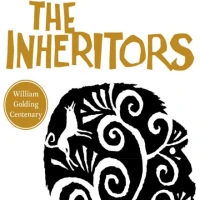

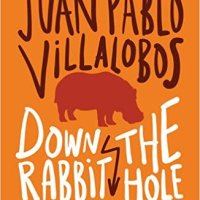
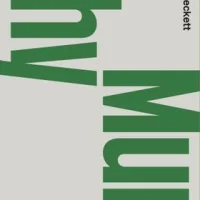


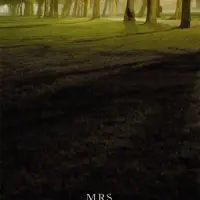

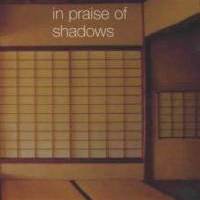




I trust your judgment that this is a great piece of fiction, but it doesn’t sound like my cup of tea. I don’t really enjoy stories that address “the problem of existence in a universe without meaning and without ultimate authority.” I’ve read only a small amount of Beckett and Kafka (way back in college), and I have never been drawn to them. So I’ll pass it by. By the way, I wondered about the title – It didn’t sound like a Hungarian word, but it DID read like Satan-Tango.
Have you seen Bela Tarr’s film adaptation? It’s a multi-hour ordeal…. but worth watching…
http://www.imdb.com/title/tt0111341/
Guy – I hope you are now feeling mobile again after your slipped disc – no doubt the pain was dreadful and hopefully its now a receding memory.
I admire your persistence in reading this book – strangely, it’s just the sort of book that I tend to enjoy (Austerlitz for example was right up my street). I was tempted to seek this one out but have contented myself by downloading a sample to the Kindle for future perusal.
I didn’t know there was a film of it – perhaps I’ll ask my wife to get it on her lovefilm account – whether it’s up her street or not is another matter!
Unfortunately your last link to the unnamend online magazine is not working. It is always better to actually give the ‘name’ of the referenced magazine in addition… I take it that you are speaking about the Quarterly Conversation review?
http://quarterlyconversation.com/satantango-by-laszlo-krasznahorkai
If you have not done it yet, read these very helpful overview articles of Krasznahorkai’s work:
Quarterly Conversation, D. Auerbach, The Mythology of L. Krasznahorkai
http://quarterlyconversation.com/the-mythology-of-lszl-krasznahorkai
New Yorker, J. Wood, The Very Strange Fictions of L. Krasznahorkai
http://archives.newyorker.com/?i=2011-07-04#folio=071
London Review of Books, J. Szalai, Where Forty-Eight Avenue joins Petőfi Square
Click to access London%20Review%20of%20Books%20-%2026.04.12.pdf
Three more insightful reviews of Satantango:
New York Times
Words Without Borders
http://wordswithoutborders.org/book-review/laszlo-krasznahorkais-satantango
Los Angeles Review of Books
http://lareviewofbooks.org/article.php?type=&id=738&fulltext=1&media=#article-text-cutpoint
Oh, and I forgot to mention the nice overview article:
The Nation, B. Ehrenreich, The Ravagin Nothing
Click to access The%20Nation–Ehrenreich%20(1).pdf
as well as this nice review of Satantango:
The New Inquiry, D. Bevacqua, Dance with the Devil
http://thenewinquiry.com/essays/dance-with-the-devil/
Another Review:
The Millions, A. Z. Levy, Dance in Purgatory
http://www.themillions.com/2012/03/dance-in-purgatory-laszlo-krasznahorkais-satantango.html
And an interesting interview with the author:
The Millions, P. Morton, Anticipate Doom
http://www.themillions.com/2012/05/anticipate-doom-the-millions-interviews-laszlo-krasznahorkai.html
Lorinda, it’s not a Hungarian word, the implication you picked up on is entirely intentional.
Joachim, not yet, but I do intend to. It’s on the lengthy list.
Tom, sadly the pain remains very present, though it’s not as bad as when it ll started. It makes concentration very difficult, as do the painkillers. Regarding the film, I would warn that it’s famously seven hours long. The book is definitely worth reading.
Birne, thanks for the links. It was The New Inquiry. I’ve fixed the link and you’re right, it was silly of me not to name the magazine. I’ve read some of the articles you linked to, but certainly not all so I’ll be interested to do some more background reading there.
Hey Max, you are welcomd! I hope those articles can give you new input. As you have probably already guessed I am a fan of Krasznahorkai’s work. From the overview articles I found the ones by Wood and Szalai particularly interesting, the latter also covers Satantango to some extend.
There is one more interesting thing, a new literature (and music) journal called ‘Music&Literature’. It’s second issue is about to appear and will feature new work by and on Krasznahorkai and Tarr, for fans of his work certainly a must-read but maybe also for others worth a look:
http://musicandliterature.org/issues/spring-2013-krasznahorkai-tarr-neumann/
Reading your review, I have mixed feelings about the book. I’m drawn to the text as the quote appeal to me and I find the style fantastic.
Part of me thinks about The Passport by Herta Müller because of the small village you describe, the atmosphere and I shy away from any experience that could bring me close to reading that kind of book again.
I’m intrigued and your recommendation means something to me.
PS: In French, the title is Tango de Satan.
Hello Max: I was hoping that the post meant that you were 100% better. Sorry to hear that you’re not.
Anyway, I too have mixed feelings. Part of me says yes (the doctor only concerned with his own ailments) but then the unreal stuff puts me off. I know that S. American lit has Magical Realism, does Eastern European lit have a similiar term? Magical Realism doesn’t fit somehow.
It was Hungarian Lit that you planned to explore more of wasn’t it? I would think (speaking for myself, I realise) that too much in one go would be a bit of a chore.
I thought it was a remarkable book, and you’ve captured many of its qualities perfectly Max. I suppose you can’t ignore that it was written in a society that had stagnated under 30 years of Communist rule, although there are certainly no overt politics in the book: even the informers and bureaucrats seem more like something from a dystopia of confusion by Kafka then anything else.
Thinking back to my reaction to Skylark, it strikes me there’s an awful lot of drinking in both books. Although the conviviality of Kosztolanyi is markedly absent from the frantic revels depicted here. I loved that passage describing the invisible spiders slowly webbing the comatose villagers after their collapse. And Irimais’s speech! A set-piece like that shouldn’t work, yet in Krasznahorkai’s hands it is memorable.
To Guy’s point about magic realism: it sounds like that’s what Krasznahorkai is doing but I think it is something different. The phenomena that intrude on the everyday in this novel are of a different quality (and meaning) then the kitschy stylings of South American lit (or indeed Rushdie). They’re manifestations of the athmosphere you describe Max, the atavism of the villagers and the forces that intrude to crush their miserable existences. I realise that no exactly sell this as something people would want to read, but, as you also say the writing is incredible, and there is a constant aura of black farce hanging over the book which I found very engaging.
I think this will undoubtedly be one of my top books for the year.I’ve ordered the movie as well, but at 7 hours I’m not sure how to organise the practical matter of watching it.
PS – as I said on Twitter, I wish you the best with recovery Max. Sounds like it’s been pretty miserable.
Hey leroyhunter, the film is subdivided into the same 6+6 parts as the book, so one solution would be to just watch one or two chapters at a time.
I enjoyed the book quite a bit and did sort of a spoof post on it, answering straight-ahead questions while not covering anything that made the book so engaging until you get to the “how” question. There are some additional links in the post. Glad to see your post on it.
Hello from Sweden!
I really enjoyed reading your review/analyzis of The Melancholy of Resistance – in particular your thoughts about the use of language in the novel. It’s always difficult to comment on the language of a translated text, but in this case it feels very fluid and natural. I love the way Krasznahorkai catches you in a mudslide of prose and forces you to slow down your reading and really concentrate.
I’d recommend watching Bela Tarrs film of the novel, if you get the chanse. It’s very close to the source material and well acted – Lars Rudolph alone (who plays Valuska) is worth the effort of getting hold of it. In case you haven’t visited it Krasznahorkai has an english-language website with some interesting material at http://www.krasznahorkai.hu/.
Best wishes for a speedy recovery // Fredrika
Just realised that I my brain seems to have short cirquited while I was writing my response – of course i mean Satantango, not The Melancholy of Resistance. That’s what you get for waking too early and working too late, I guess… :S
I ve been putting mine of for months Max,mainly as I want to do this great books justice in my post and do something special as it is such a unique vision he has ,all the best stu
Install a Facebook Like button so we can Like this stuff please!
Emma/Guy, I’d say that if you like the quotes you’ll likely like the book(Emma perhaps more than Guy) . There are some additional quotes at the links I gave at the end of the piece (and the excellent links which Birne provided), but as so often it’s the language that’s key. If the quotes work for you then it’s worth trying.
As Leroy says I don’t think it’s magical realism as such, it’s just not a novel which feels bound by rules of realism/naturalism. I’ve seen it described as high modernism, and that’s not unfair. It plays with questions of authorial authority the authority of the narrative itself – which not everyone will enjoy.
With respect to reading a lot of Hungarian lit recently, to be honest I could easily read more. There’s a real wealth of quality work there. I don’t feel fatigued by it at all so far.
Leroy, good points on the atmosphere reflecting (but not crudely) something of 20th Century Hungarian politics, but even more so on the way both this and Kosztolanyi make food and drink central but here without that conviviality which is so essential. The food in Skylark is joyous, here it’s desperate, but in each it’s central. The Irimias set piece works brilliantly, which it needs to given how central it is.
Dwight, I’m offline the next few days but will check out your spoof on my return. Interesting stuff.
Fredrika, “forces you to slow down your reading and really concentrate.” Yes. Precisely. That’s part of what makes it work, but also returning to Emma and Guy why if one does read this one needs to put aside some time for it. It needs to be read in a small number of big chunks I’d say, given space to exert its power. It would make an absolutely shocking commute read.
Since Fredrika mentioned Melancholy, and since I’ve so many Krasznahorkai fans here (Birne in particular seems to know his work well), is that the best next port of call with him?
Stu, that makes sense. I was surprised I hadn’t found a review by you.
Paul, shall do.
And everyone, the Tarr is on the list, but having spent the past month doing damn all but watch DVDs and physio exercises it’ll probably fall some time into next year before I get to it.
Well, I managed somehow to like my own post, which is a bit random. Paul, please let me know if the facebook thing now works. If not I’ll take another look at the sharing features (which that comes under) in a few days, and thanks for the comment by the way!
You liked your own post? As we say in French : On n’est jamais si bien servi que par soi-même. 🙂 (A man’s best servant is himself)
Hey Max, I think The Melancholy of Resistance is a good choice for a second encounter. If I remember correctly I also read them in this order at the time. Don’t forget to watch Werckmeister Harmonies afterwards, the film adaptation of it (only of the center part of the novel to be exact). In contrast to the film version of Satantango it has ‘normal length’ and is therefore much more digestible. My personal favorite is War And War, though. All three novels are great in any case. Although, I guess it is fair to say that Satantango is the most ‘conventional’ of the three (relatively speaking). The English translation of ‘Seiobo There Below’, a collection of thematically connected stories is slated for publication in summer 2013, btw. That one is also a great great book, completely different from his earlier works.
Max, I saw a link to your review (via @John_Self) but held back from reading it before I had written my own – not strictly a review, but my monthly reading digest: my November reading post centres around Satantango and HHhH, two books that I read through to the end without really enjoying… for very different reasons.
Here’s a link, if you’re interested, and congratulations on your sensitive and sensible take on it…
Pingback: That Was The Year That Was: 2012 | Pechorin’s Journal
Birne, Melancholy it is. I’ve heard good things about it from a number of sources. I’ll check out the film too.
Good news about There Below.
Jonathan, sorry for the belated reply, everything’s still a bit slow at the moment in terms of reading, updates and online activity (and offline for that matter). I’ll leave a comment over at yours, though I must say I did love this line in your review:
“It felt like eating through twelve near-identical loaves of heavy German bread, one after the other.”
Excellent review Max. I read it after seeing the film so was a bit worried that the images – the very powerful images – of the film would invade my reading of the novel. But this didn’t happen. I don’t think it’s Magic Realism; Beckett and Kafka are references I would think, as is Bernhard, but there’s something quite concrete to the writing/plot. It’s almost like a heightened
realism, if that makes any sense. Some of the writing is so good I had to pause between sentences. And full credit to the translation too.
I wouldn’t call it magical realism either (not that that’s a term I’m hugely fond of anyway). I agree with you, Kafka, Beckett, Bernhard (who I’ve not read actually). Heightened realism is a good way of putting it.
It is beautifully written, and translated, isn’t it? A true masterpiece.
Terrific review, Max. I finished reading this last night and feel it’s going to stay with me for quite a while. I found it utterly absorbing – it seems to capture a community balancing on a knife edge between hope/salvation and despair/damnation. Everything about it is exceptional – the quality of the writing, the translation and it’s brilliantly structured too. Definitely one to reread at some point.
Thanks Jacqui, and I’m glad you liked it. Kevin of kevinfromcanada just reviewed it and wasn’t as taken, so if you’re interested in seeing a more negative review (not damning, he just didn’t love it as I did or as you clearly did) it might be worth sauntering over to his to see his thoughts.
Agree that it’s a definite re-reader. It passes that particular (and particularly useless) Nabokovian test that the only books worth reading are those worth rereading.
Ooh, that’s interesting. It’s always good to hear other people’s thoughts, especially on such a fascinating book. I’ll head over to Kevin’s and take a look. Thanks for mentioning his review.
This sounds just my cup of tea, not least because the Tango was my favourite dance when I used to shuffle around dance halls at uni (Satan would have been proud of the injuries my ‘moves’ inflicted). How it translates to an existential novel, I’m intrigued to see.
I will definitely try and look this one out. But first, I’ve now having one of those nagging moments, where I try to remember another cover that looks remarkably similar to Satantango’s, and which crossed my path just a few days ago. Hmm….
It’s spectacular, my book of 2012. The last link in my post leads to a review which discusses how the book’s structure reflects that of the dance. Sadly I couldn’t speak to that.
It’s a well matched cover, but it’s surprising how often covers are re-used or very similar covers applied to a range of books, so it wouldn’t surprise me at all to learn it’s not original (or at least not unique).
Skylark is the easier read. This is one to read when you have time to really engage with a book, it’s not even slightly suitable for casual reading if you’re otherwise distracted.
It does sound like a more challenging read. I have a bit of a love/hate relationship with books that try to do interesting things structurally, ala the Tango in this case. It’s definitely one I fancy picking up, although I wonder if I’d be better served picking up some other Hungarian literature first. I’ve read a handful of Japanese novels (in translation) in the last couple of years, and I think the more I become acclimatised to the writing culture, the more I enjoy the books. I’m yet to appreciate Murakami, but having read some other Japanese authors I’m hopeful that I’ll be able to go back and get more from his work.
Skylark is a great place to start with Hungarian lit, or anything by Antal Szerb (I’ve reviewed two of his here).
Your comment re the Japanese literature makes sense. If only because one starts to get acclimatised to cultural details the author may well be taking for granted. Murakami is very much his own thing. I like him, but the Akira Yoshimoto’s I’ve covered here were both great and I’ve loved the Junichiro Tanizaki’s I’ve read. I think Caroline of Beauty is a Sleeping Cat has read a fair bit of Japanese literature (as have I actually, but most of it before the blog).
Which Murakami’s did you try out of interest? I’ve read a fair few, and there’s one of his most popular that I just utterly bounced off so it may be you just chose one that wasn’t his best.
Thanks for the recommendation, I’ll have to stop by Caroline’s blog at some point soon. Murakami is an absolute riddle to me. Everyone whose opinion I appreciate, enjoys him and yet I’ve tried three times to read one of his books and stopped mid-way through on all occassions (something I barely ever do).
I’ve had a go at Wind Up Bird and Hard-Boiled Wonderland (twice). I was motoring along ok with Wind Up Bird and then objected very strongly to the skinning scene (I wonder if I still would). Not, incidentally, on the grounds of vulgarity (my feelings about American Psycho probably indicate I have no problem with grotesque violence), but on the grounds of unjustified vulgarity. Hard-Boiled Wonderland just ground to a halt. I do wonder if I’d feel the same now as it’s been a couple of years, but I haven’t found the time to take a chance on reading something I quite likely won’t enjoy.
Wind Up Bird is the one I bounced off from. I’m not sure if I’ll return to it.
My favourite Murakami, though it’s a bit atypical as it includes no surreal elements, is his South of the Border, West of the Sun. It’s about a man in his 30s, happily married with children and owner of a successful jazz bar, who encounters a childhood sweetheart and gets tempted by might-have-beens. The Murakami I started with, which I think is a good general introduction and got me to read more, was A Wild Sheep Chase.
Hard-boiled I did like, but I wouldn’t suggest starting with it to be honest as it’s quite strange and only really comes together once you’ve read the entire thing.
Thanks for the thoughts Max – I think I may be coming away from this comment thread with a healthy list of books to look out!
Strange to see that how harder is the English translation of this piece to understand than the Hungarian, simply because English rarely uses commas, while Hungarian separates almost every sum-sentence with it. (Oh my, just look at my comment…) For example that first long sentence contains 6 commas in original text (and it’s really not a very hard sentence) and 0 in English. 🙂 Weird.
It’s the same with Proust. Comma after comma after comma, which is fine once you get used to it but it’s stylistically unusual in English language fiction.
That said, Anthony Powell’s Dance to the Music of Time series (admittedly influenced by Proust) uses a similar technique so it’s not unknown.
The 0 though will be a stylistic choice that George Szirtes made. We’d have to ask him why, but I presume he thought it somehow communicated something about the original that preserving the commas wouldn’t.
Maybe he decided like this because he saw Béla Tarr’s film adaptation which uses looong, loooong shots. He was probably influenced by that avantgarde or postmodern style and wanted to present the feeling in the prose of the novel. Here’s an example of the film. You’ll laugh. 😀
Yes, the the wagon moves away and it takes minutes…
Oh, the blog motor converted the link into embedded YT, so move to 1:10:20 in the video.
One of my favourite lines from a film review came from Peter Bradshaw in the Guardian. He was reviewing Sex and the City 2, and commented that he’d actually seen Béla Tarr’s famous seven hour movie Satantango, but Sex and the City 2 had felt far longer when he was watching it.
I really want to see the Tarr movie actually. That scene somehow reminded me of the car chase in Tarkovsky’s Solaris, which may be the slowest car chase in cinematic history.